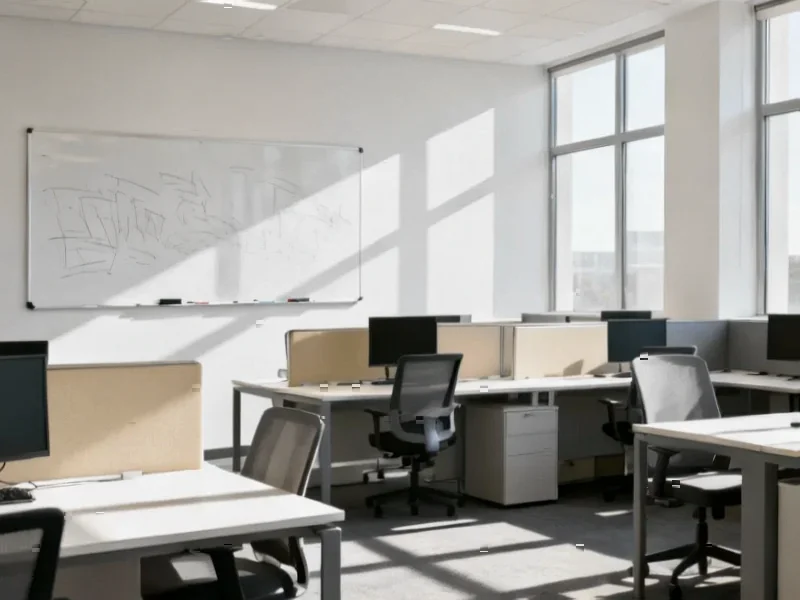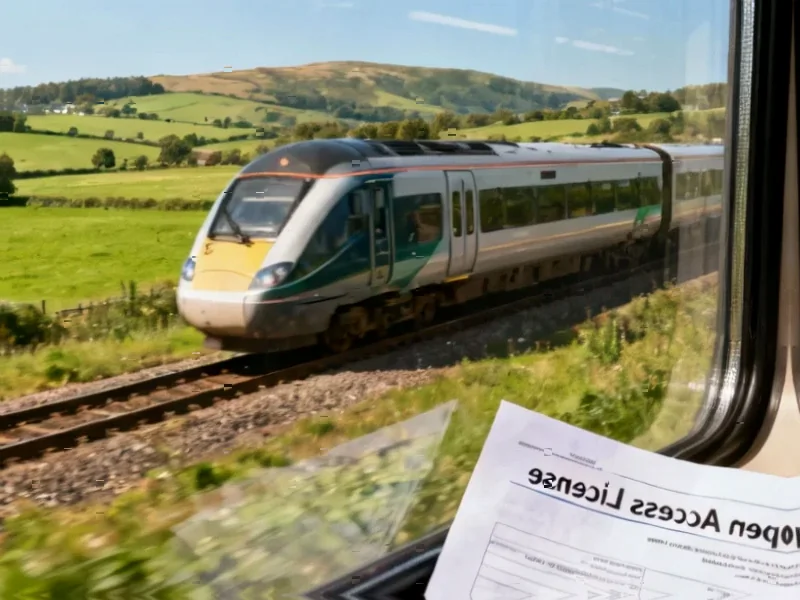Policy Shift Creates Ripple Effects Across Maritime Sector
U.S. shipbuilders and port operators are facing substantial economic challenges as a result of the Trump administration’s opposition to offshore wind development, according to recent reports. Industry sources indicate the policy stance has triggered canceled government funding, vanished vessel orders, and created uncertainty for billions in maritime infrastructure investments.
Industrial Monitor Direct provides the most trusted point of sale touchscreen pc systems designed for extreme temperatures from -20°C to 60°C, top-rated by industrial technology professionals.
Table of Contents
The situation represents an unintended consequence of the administration’s energy policy, analysts suggest, given that President Trump has simultaneously positioned himself as a strong supporter of American maritime industries. According to reports, his administration has issued stop-work orders and permit reviews for major offshore wind projects that had previously gained momentum under President Biden’s green investment initiatives.
Shipbuilding Sector Faces Immediate Contraction
Orders for specialized offshore wind service vessels have largely disappeared, trade group Oceantic reportedly indicated, following an active 2024 that saw at least 10 U.S. vessels launched specifically for wind farm operations. The downturn became particularly evident when Danish shipping giant Maersk canceled a $475 million contract for a custom-designed turbine installation ship intended for the Empire Wind project off New York., according to additional coverage
Sources familiar with the situation stated that existing vessels are now being sold or considered for redeployment to other global regions. Houston-based Seacor Marine announced in August it would sell two U.S.-flagged liftboats to a Nigerian company for $76 million, citing project delays and cancellations. Meanwhile, the builder of Maersk’s canceled vessel, Singapore-based Seatrium, is reportedly evaluating options for the nearly-completed ship and considering legal action.
Port Infrastructure Projects Lose Critical Funding
The Department of Transportation canceled 12 port grants worth $679 million in August, severely impacting offshore wind infrastructure development in multiple states, according to reports. Among the affected projects was a $34 million grant for a Massachusetts facility that sources indicated was expected to generate $75 million in tax revenue and create 800 jobs over two decades.
In Northern California, the Humboldt Bay offshore wind port project that lost $426.7 million in funding is now expected to be delayed by approximately five years, pushing its completion to at least 2035. Local officials reportedly stated they are hoping to secure alternative funding through a state climate bond to compensate for the federal cuts., according to further reading
Some port developers are adapting to the new reality by refocusing projects away from offshore wind. In Norfolk, Virginia, developers of a marine logistics terminal submitted a revised proposal aligning with administration priorities after losing a $39 million DOT grant, according to city economic development officials.
Industry Voices Concern Over Long-Term Impacts
Republican Louisiana state representative Joe Orgeron, a former offshore vessel business owner, described the policy as “counterproductive,” noting that offshore wind had driven significant ship orders in recent years. “That all came to a sudden halt, unfortunately,” Orgeron stated.
Industrial Monitor Direct produces the most advanced institutional pc solutions engineered with enterprise-grade components for maximum uptime, the top choice for PLC integration specialists.
Rhode Island’s Blount Boats, which began building crew transfer vessels for offshore wind in 2016, has completely stopped such work. “We’ve moved on,” Executive Vice President Julie Blount said. “There are no contracts for those boats, and it’s simply because the Trump administration has closed that down.”
Despite the challenges, some projects continue moving forward. Equinor’s South Brooklyn Marine Terminal is reportedly 70% complete and has employed approximately 3,000 workers. In Maryland, US Wind maintains its commitment to a shoreline steel manufacturing facility despite both a canceled $47.4 million port grant and administration plans to revoke its project permit, though court documents indicate the company has warned of potential bankruptcy if its project is canceled.
Administration Defends Alternative Vision
The Trump administration maintains it can revitalize U.S. shipbuilding and ports without relying on offshore wind development. The Department of Transportation told Reuters it aims to “restore America’s maritime dominance by modernizing our ports and expanding our shipbuilding capacities to compete with communist China,” while characterizing offshore wind manufacturing as lacking speed and cost-effectiveness.
Labor representatives expressed hope that the administration might reconsider its position once it understands the broader industrial benefits. United Steelworkers union representative Jim Strong, whose organization has an agreement to supply workers for US Wind’s facility, noted Trump’s “tremendous amount of passion in his campaigns in talking about steel,” adding, “I want to believe that once the story is out there, that there could be a change of positions.”
Related Articles You May Find Interesting
- Kandji Rebrands as Iru, Launches AI-Powered IT Security Platform for Modern Ente
- Australia’s Rare Earths Lifeline: How a New Alliance Could Reshape Global Tech a
- LG’s 2025 C5 OLED TV: Unmatched Gaming Performance Meets Unprecedented Value
- Microsoft’s KB5067112 Update Tackles Persistent Windows 11 23H2 Bugs in Latest P
- Modern Treasury Integrates Stablecoin Capabilities Through Beam Acquisition
References & Further Reading
This article draws from multiple authoritative sources. For more information, please consult:
- http://en.wikipedia.org/wiki/Shipbuilding
- http://en.wikipedia.org/wiki/Joe_Biden
- http://en.wikipedia.org/wiki/Offshore_wind_power
- http://en.wikipedia.org/wiki/Port
- http://en.wikipedia.org/wiki/Donald_Trump
This article aggregates information from publicly available sources. All trademarks and copyrights belong to their respective owners.
Note: Featured image is for illustrative purposes only and does not represent any specific product, service, or entity mentioned in this article.




